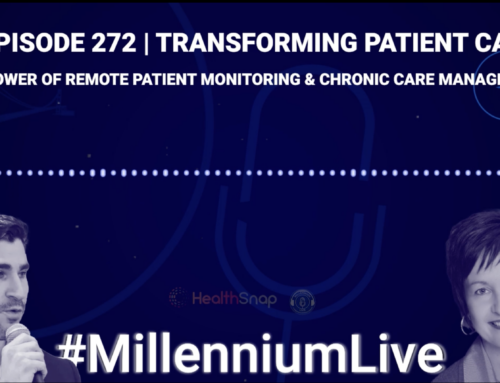Chronic diseases are persistent conditions that require ongoing monitoring and treatment. These long-lasting diseases are generally deep-rooted and often worsen with time. Some common chronic conditions include cancer, stroke, heart disease, arthritis, and diabetes.
Chronic disease management has always been a major cause for concern for healthcare organizations, compelling them to continuously look for ways to improve quality of care and patient outcomes while keeping a check on the costs.
Virtual Care for Chronic Disease Management
Telehealth and virtual care for chronic disease management enable clinicians and specialists to use connected health devices, live video, and other digital tools to monitor and supervise a patient remotely, reducing the need for hospital visits and in-person consultations.
With virtually assisted Remote Patient Monitoring, it is easier for a patient’s care team to analyze medical reports, educate the patients, and begin the required treatment with minimal delays. Here are a few more advantages of virtual care for chronic disease management, discussed briefly below.
Enhanced Access to Specialized Healthcare
Virtual care can provide healthcare access to patients in rural areas that lack adequate healthcare facilities. Telehealth also manages to reduce travel time and cost for patients who may find it difficult to travel due to their chronic conditions or inadequate travel facilities.
Patients with chronic conditions also often rely on specialized care that may be hard to find in certain rural areas, making it difficult for them to visit their healthcare provider regularly. But with virtual care, they can communicate with clinicians and specialists remotely.
Enabling Lifestyle Changes
Apart from the treatment for their chronic conditions, patients may also need to incorporate some changes into their lifestyle to mitigate or modify the condition. These lifestyle changes may include getting more exercise, making changes in diet, quitting smoking, and so on.
While some patients may find it difficult to follow strict treatment regimens, virtual care offers remote patient monitoring facilities, with care teams remotely monitoring a patient’s progress with following lifestyle guidelines.
Prioritized Symptoms in Near Real-Time
It is not uncommon for patients with chronic ailments to come across new symptoms once in a while. Some patients may ignore a new symptom to avoid traveling long distances for a hospital visit or a specialist consultation.
Telehealth and virtual care for chronic condition management enable a quick consultation with a care provider in real-time. The physician can then recommend a change in the line of treatment or advise the patient to visit a local emergency room if their condition seems serious.
Reduced Hospital Readmissions
Patients with chronic conditions often are frequently hospitalized resulting in higher healthcare costs. But virtual care enables remote health monitoring of chronic condition patients by physicians and specialists, ensuring better disease management and reducing chances for hospital readmissions.
Healthcare providers using virtual care can ensure that patients maintain lifestyle changes, provide feedback, and tend to new symptoms, thus reducing potential hospital readmissions.
Manage Chronic Conditions in a Virtual Care World
Empower your care teams with Healthsnap’s Remote Patient Monitoring and Telehealth to improve patient outcomes, deliver proactive care, and augment revenue streams. A single integrated Virtual Care Platform monitors chronic conditions and drives the shift to proactive and continuous patient care.
We invite you to learn more about the benefits of using virtual care for chronic disease management by calling us at 888-780-1872 or using our online form to request a consultation or demo.












Leave A Comment
You must be logged in to post a comment.